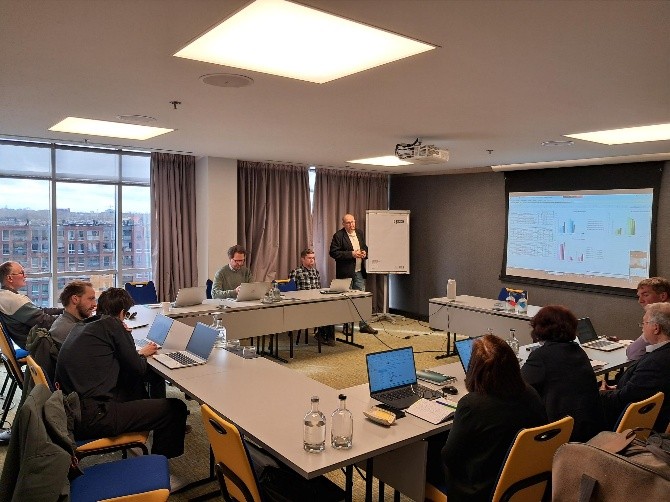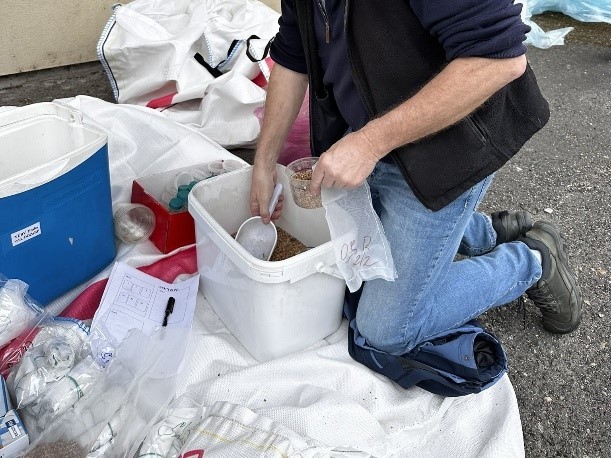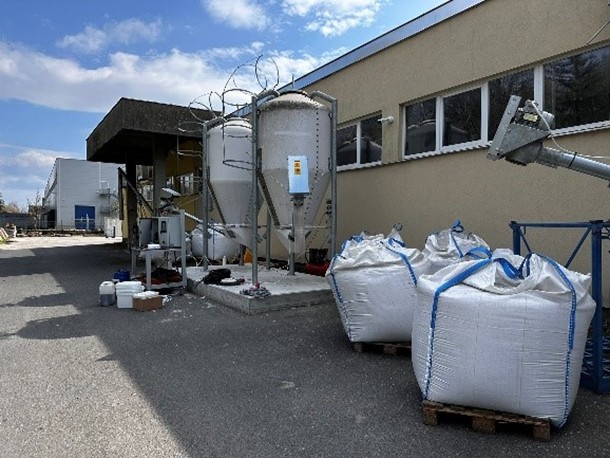On February 26 and 27, the 8th consortium meeting of the novIGRain project took place in Utrecht. The first day contained a city tour in Utrecht and a consortium dinner organized by Linge Agroconsultancy. It was a joyful reunion for all partners and an ideal preparation for the meeting the next day.
The actual meeting on the 27th started with a plenary session in the morning. In this part, both the progress and the challenges of the past project period were discussed. After lunch, the meeting continued with in-depth discussions on the various sub tasks within the project. These discussions were held in small groups or one-on-one, allowing targeted questions and making the discussions as detailed and efficient as possible.
After this part, the consortium meeting concluded, and all partners returned home. Especially with the obtained information from the afternoon session, everyone knows what to do in the coming months!
SILO tests
In April, the novIGRain partners Babolna Bio Ltd. (Hungary), SOJAM (France) and the Czech Agrifood Research Centre (CARC, former CRI, Czech Republic) launched a field trial. The goal was to test the new application technology and new larvicidal product in real storage conditions.
The application was carried out during the silo loading process using the dual-nozzle ULV (Ultra Low Volume) sprayer, developed by SOJAM. This novel equipment allows for homogeneous distribution of the product throughout the grain. The wheat – used in the trial – was already infested with common storage pests, ensuring a natural test environment. To further challenge the larvicide’s capabilities, CARC researchers introduced additional insect specimens that are resistant to other commonly used insecticides, allowing for a more robust and comparative performance assessment.
Throughout the trial, monthly sampling will be conducted to monitor pest populations, the insect development and emergence reduction.
The study is being conducted in close cooperation between the partners Sojam, CARC and Bábolna Bio. In addition to the tasks related to the launch of the trial, there was also time for a useful exchange of experience and valuable discussions on pest management between the consortium members actively involved in the implementation of this comprehensive and complex trial.
novIGRain at ICUP 2025 – Bridging Stored Product Protection and Urban Pest Control
The novIGRain project was represented at the ICUP 2025 (International Conference on Urban Pests) in Lund, Sweden by two consortium members, highlighting the relevance of stored product pest management in the broader context of urban pest control.
Václav Stejskal from the Czech Agrifood Research Centre delivered a highly informative presentation titled: “Resistance of stored product Coleoptera pests to deltamethrin, pirimiphos-methyl, and phosphine in the European Union” — sparking engaging discussions around resistance trends and pest management strategies.
From Bábolna Bio Plc, Dr. Ildikó Vashegyi and Anna Tass represented the company, with Anna presenting a poster (“NOVEL GRAIN PROTECTION TECHNOLOGY AS A FUMIGATION ALTERNATIVE”) on novIGRain’s product development results. We were especially pleased by the interest shown by university researchers, entomologists, and industry professionals, many of whom congratulated us on the project’s scientific and practical achievements.
Although ICUP focuses primarily on urban pests and their control, we were pleased to see genuine interest and openness toward the novIGRain project. This reinforces a key message of our work: Pest control of stored products doesn’t end at the silo or warehouse — it continues along the food chain. Stored grain becomes food, which then enters urban supply chains: food warehouses, shops, and households. Thus, stored product pest management naturally intersects with urban pest control.
Our participation at ICUP underlined the importance of cross-sector collaboration between agriculture, food safety, and urban environments — and we’re proud that novIGRain is part of this growing conversation.
Article CRI
The team of researchers from the CARC, Czech Agrifood Research Center, involved in the research of the novIGRain project on the resistancy of common storage pests in Europe, published an interesting article in June about the history of pest taxonomy. Their passion for pest taxonomy has been a real contribution to our project: they have analyzed samples from multiple locations in no less then 10 member states (and counting), determining which pests were present in the storage facilities and to what extent these pests were resistant to the plant protection products (active substances) used.
The article has several interesting facts to show. Did you for example know that:
- Larger and more noticeable species received their scientific names much earlier than their smaller, less conspicuous relatives.
- The smaller the species, the later scientists discovered and described it.
- Nevertheless, these smaller species such as mites and psocids are important pests, for example causing allergens in our households.
Want to know more? Here you can find the article as a whole: relationship between taxonomic classification and applied entomology: stored product pests as a model group | Journal of Insect Science | Oxford Academic
Although this research is not part of the Horizon2020 Novigrain project itself, we strongly support our partners in everything they accomplish!




